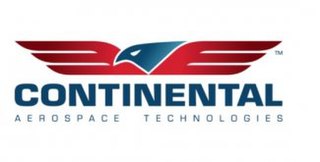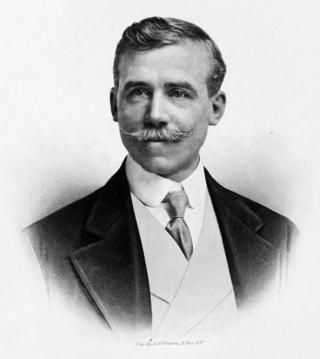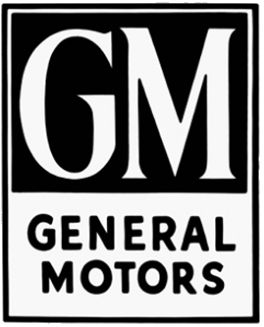
The Winton Motor Carriage Company was a pioneer United States automobile manufacturer based in Cleveland, Ohio. Winton was one of the first American companies to sell a motor car. In 1912, Winton became one of the first American manufacturers of diesel engines.

The inline-six engine is a piston engine with six cylinders arranged in a straight line along the crankshaft. A straight-six engine has perfect primary and secondary engine balance, resulting in fewer vibrations than other designs of six or fewer cylinders.

Isuzu Motors Ltd., commonly known as Isuzu, is a Japanese multinational automobile manufacturer headquartered in Yokohama, Kanagawa Prefecture. Its principal activity is the production, marketing and sale of Isuzu commercial vehicles and diesel engines.

Continental Aerospace Technologies is an aircraft engine manufacturer located at the Brookley Aeroplex in Mobile, Alabama, United States. It was originally spun off from automobile engine manufacturer Continental Motors Company in 1929 and owned by Teledyne Technologies from 1969 until December 2010. The company is now part of Aviation Industry Corporation of China (AVIC), which is a Government of the People's Republic of China state-owned aerospace company headquartered in Beijing.
Detroit Diesel Corporation(DDC) is an American diesel engine manufacturer headquartered in Detroit, Michigan. It is a subsidiary of Daimler Truck North America, which is itself a wholly owned subsidiary of the multinational Daimler Truck AG. The company manufactures heavy-duty engines and chassis components for the on-highway and vocational commercial truck markets. Detroit Diesel has built more than 5 million engines since 1938, more than 1 million of which are still in operation worldwide. Detroit Diesel's product line includes engines, axles, transmissions, and a Virtual Technician service.
The General Motors Firebird comprises a quartet of prototype cars that General Motors (GM) engineered for the 1953, 1956, and 1959 Motorama auto shows. The cars' designers, headed by Harley Earl, took Earl's inspiration from the innovations in fighter aircraft design at the time. General Motors never intended the cars for production, but rather to showcase the extremes in technology and design that the company was able to achieve.

An inboard motor is a marine propulsion system for boats. As opposed to an outboard motor where an engine is mounted outside the hull of the craft, an inboard motor is an engine enclosed within the hull of the boat, usually connected to a propulsion screw by a driveshaft.

Alexander Winton was a Scottish-American bicycle, automobile, and diesel engine designer and inventor, as well as a businessman and racecar driver. Winton founded the Winton Motor Carriage Company in 1897 in Cleveland, Ohio, making the city an important hub of early automotive manufacturing. His pioneering achievements in the automotive industry included taking one of the first long-distance journeys in America by car and developing one of the first commercial diesel engines. Winton left the automotive manufacturing business when he liquidated his car company in 1924 to focus on his powertrain engineering firm, Winton Gas Engine & Mfg. Co., which he had established twelve years earlier to focus on engine development. This business was sold to General Motors in 1930 and became the Cleveland Diesel Engine Division. Winton died in 1932 and is interred in Lake View Cemetery in Cleveland.
The Sintz Gas Engine Company was formed in about 1885 by Clark Sintz and others in Springfield, Ohio. It was a pioneering marine engine manufacturing business that expanded into other fields. After its sale in 1902 to the Michigan Yacht and Power Company, Sintz ceased to exist in 1903 as an entity.

The GM "old-look" transit bus was a transit bus that was introduced in 1940 by Yellow Coach beginning with the production of the model TG-3201 bus. Yellow Coach was an early bus builder that was partially owned by General Motors (GM) before being purchased outright in 1943 and folded into the GM Truck Division to form the GM Truck & Coach Division. The Yellow Coach badge gave way to the GM nameplate in 1944. Production of most "old-look" models was stopped upon the release of the GM New-Look bus in 1959, however some smaller "old-look" models continued to be built until 1969. Approximately 38,000 "old-look" buses were built during the 29-year production run. The "old-look" name is an unofficial retronym applied to this series of GM buses after the release of the GM New-Look series.
L. Gardner and Sons Ltd was a British builder of diesel engines for stationary, marine, road and rail applications. The company was founded in Hulme, Manchester, England in 1868. It started building engines around 1895. The firm ceased engine production in the mid-1990s.

A V8 engine is an eight-cylinder piston engine in which two banks of four cylinders share a common crankshaft and are arranged in a V configuration.

Buda Engine was founded in 1881 by George Chalender in Buda, Illinois, to make equipment for railways. Later based in Harvey, Illinois, Buda from 1910 manufactured engines for industrial, truck, and marine applications. Early Buda engines were gasoline fueled. Later, diesel engines were introduced, utilizing proprietary Lanova cylinder head designs, injection pumps and nozzles. These were known as Buda-Lanova diesel engines. Buda Engine Company was acquired by Allis-Chalmers in 1953. The Buda-Lanova models were re-christened "Allis-Chalmers diesel".

In the United States, the automotive industry began in the 1890s and, as a result of the size of the domestic market and the use of mass production, rapidly evolved into the largest in the world. The United States was the first country in the world to have a mass market for vehicle production and sales and is a pioneer of the automotive industry and mass market production process. During the 20th century, global competitors emerged, especially in the second half of the century primarily across European and Asian markets, such as Germany, France, Italy, Japan and South Korea. The U.S. is currently second among the largest manufacturers in the world by volume.
Gale Banks Engineering and its four divisions, Banks Power, Banks Technology, Banks Marine, and Banks Racing, are companies created by Southern California hot rodder and automobile engineer Gale Banks. These companies design, engineer, and build high performance parts for the automobile and marine aftermarket and military customers. Located in Azusa, California, the company develops technology and components for both gasoline and diesel-powered vehicles, but is best known for advancing development of the turbocharger and ultra high performance diesel engines for racing and street purposes.

Perkins Engines Company Limited, a subsidiary of Caterpillar Inc. since 1998, is primarily a diesel engine manufacturer for several markets including agricultural, construction, material handling, power generation, and industrial. It was established in Peterborough, England in 1932. Over the years, Perkins has expanded its engine catalogue, producing thousands of different engine specifications including diesel and petrol engines automatives.

The 6-71 Gray Marine Diesel Engine is a marinized version of the General Motors Detroit Diesel 6-71 engine produced by the Gray Marine Motor Company. It was used in landing craft during World War II and is used today in private boats and training facilities.

The Cleveland Diesel Engine Division of General Motors (GM) was a leading research, design and production facility of diesel engines from the 1930s to the 1960s that was based in Cleveland, Ohio. The Cleveland Diesel Engine Division designed several 2 stroke diesel engines for submarines, tugboats, destroyer escorts, Patapsco-class gasoline tankers and other marine applications. Emergency generator sets were also built around the Cleveland Diesel and were installed in many US warships. The division was created in 1938 from the GM-owned Winton Engine Corporation and was folded into the GM Electro-Motive Division in 1962. The engines continue in use today on older tugs.

The GMWhirlfire gas turbine engines were developed in the 1950s by the research division of General Motors Corporation and fitted to concept vehicles, including the Firebird concept cars, Turbo-Cruiser buses, and Turbo-Titan trucks through the 1960s. They are free-turbine turboshaft machines with two spools: one compressor/gasifier turboshaft and one power/output turboshaft sharing a common axis without a mechanical coupling between them. Fuel consumption of the first-generation GT-300 was high compared to piston engines, so thermal wheel regenerators were added to the second-generation GT-304, cutting consumption by approximately 1⁄2.

















